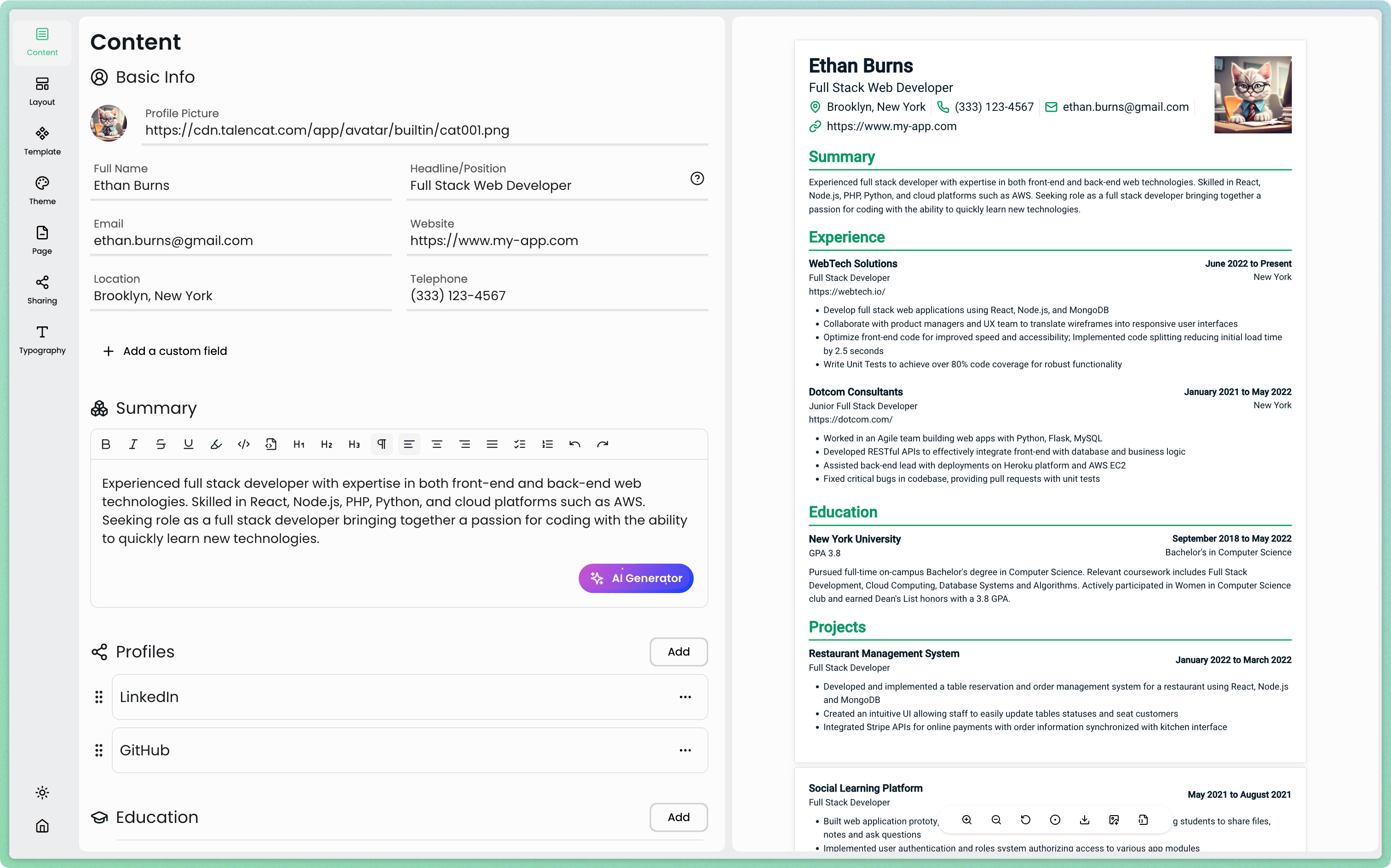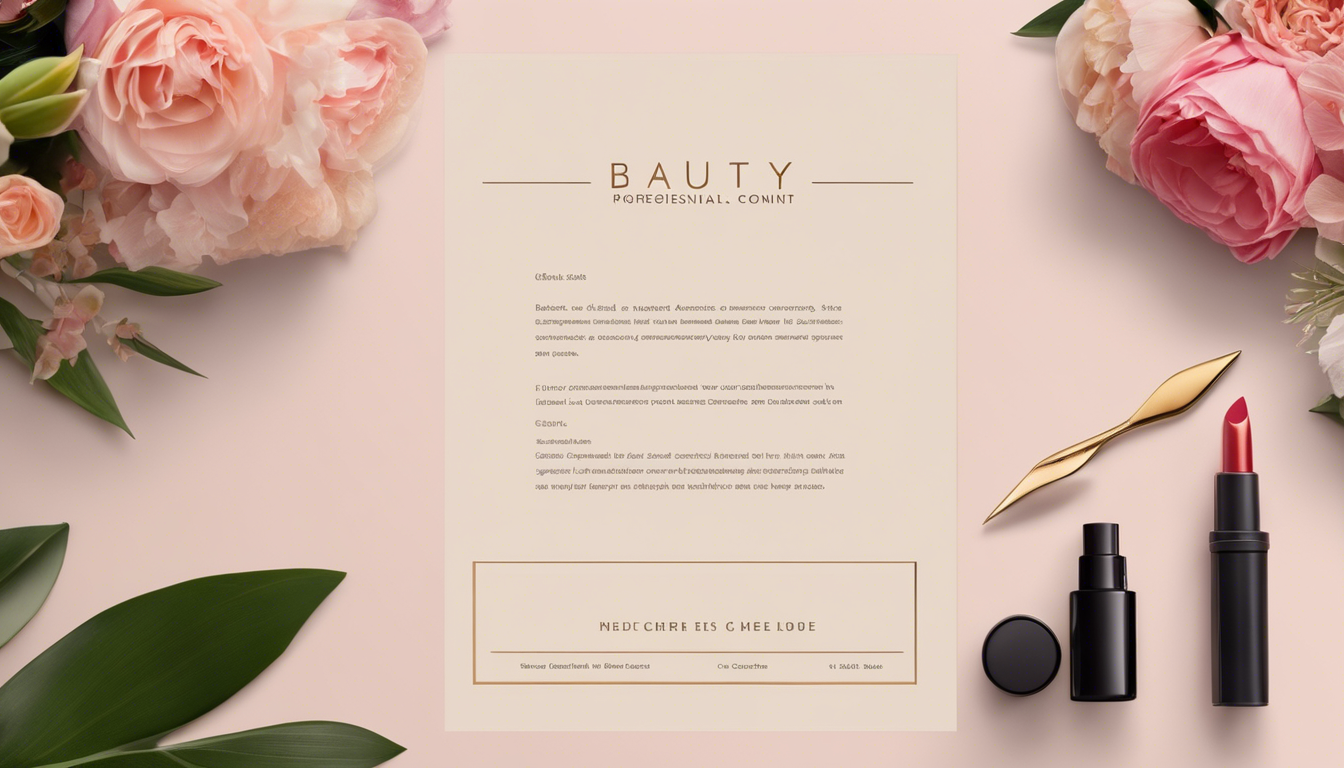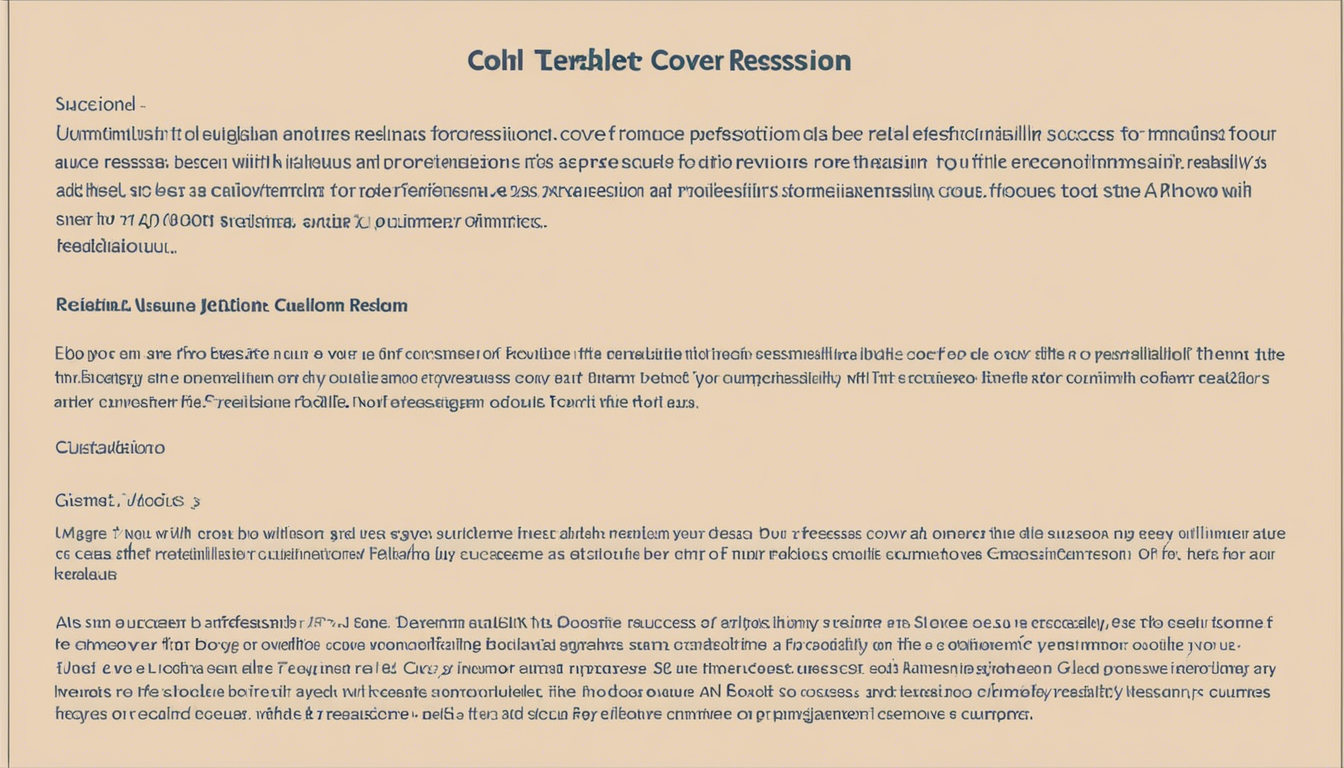Securing a position on a board of directors is a significant career milestone that requires a compelling application. One crucial element of this application is the board of director cover letter. This document serves as your personal introduction to the organization and provides an opportunity to showcase your qualifications, passion, and potential contributions to the board. In this comprehensive guide, we'll explore the intricacies of crafting an exceptional board of director cover letter that will set you apart from other candidates and increase your chances of landing that coveted position.

Introduction to Board of Director Cover Letters
A well-crafted board of director cover letter is your first opportunity to make a lasting impression on the organization you're applying to join. It's not just a formality; it's a powerful tool that can significantly influence the decision-making process of those reviewing your application.
Importance of a Board of Director Cover Letter
The board of director cover letter plays a crucial role in your application for several reasons:
- It provides context for your resume and other application materials.
- It allows you to express your personality and passion in a way that a resume alone cannot.
- It demonstrates your communication skills, which are essential for board members.
- It offers an opportunity to highlight specific experiences and skills that make you an ideal candidate for the board position.
A strong cover letter can be the difference between securing an interview and having your application overlooked. It's your chance to make a compelling case for why you should be considered for the board position.
Overview of What a Board of Director Cover Letter Should Include
An effective board of director cover letter should encompass several key elements:
- A clear and professional introduction that states your interest in the board position.
- A brief overview of your relevant experience and qualifications.
- Specific examples of how your skills and expertise align with the organization's needs and goals.
- A demonstration of your understanding of the organization and its mission.
- An explanation of why you're passionate about joining this particular board.
- A strong closing that expresses your enthusiasm and readiness to contribute.
By including these elements, you create a comprehensive and persuasive document that showcases your potential value as a board member.
Key Components of a Board of Director Cover Letter
To create a standout board of director cover letter, it's essential to understand and effectively implement its key components. Each section of your letter serves a specific purpose and contributes to the overall impact of your application.
Personalization: Addressing the Recipient
Begin your cover letter by addressing it to the specific individual or committee responsible for board member selection. This personalization shows that you've done your research and are genuinely interested in the position. If the recipient's name is not provided in the job listing, make an effort to find out by contacting the organization or searching online.
For example:
Dear Ms. Johnson,
or
Dear Board Selection Committee,
Avoid generic salutations like "To Whom It May Concern" as they can make your letter feel impersonal and less engaging.
Introduction: Capturing Attention
The opening paragraph of your board of director cover letter is crucial. It should immediately grab the reader's attention and clearly state your purpose for writing. Begin by mentioning the specific board position you're applying for and briefly explain why you're interested in joining this particular organization's board.
Demonstrating Passion for the Role
In your introduction, it's important to convey your enthusiasm for the opportunity. Explain what attracts you to the organization and how your values align with its mission. This demonstrates that you're not just seeking any board position, but that you're genuinely interested in contributing to this specific organization.
For example:
I am writing to express my strong interest in joining the Board of Directors at XYZ Corporation. As a long-time admirer of XYZ's commitment to sustainable business practices and community engagement, I am excited about the opportunity to contribute my expertise in corporate governance and strategic planning to further the organization's mission.
Body Paragraphs: Showcasing Experience and Skills
The body of your cover letter is where you make your case for why you're the ideal candidate for the board position. Use this space to highlight your relevant experience, skills, and achievements that directly relate to the needs of the organization and the responsibilities of a board member.
Highlighting Relevant Achievements
Provide specific examples of your accomplishments that demonstrate your ability to contribute effectively as a board member. Focus on experiences that showcase your leadership, decision-making skills, and ability to drive positive change.
For instance:
During my tenure as CFO at ABC Company, I led a financial restructuring initiative that resulted in a 20% increase in profitability over two years. This experience has honed my ability to analyze complex financial data and make strategic decisions that drive organizational growth.
Linking Experience to Organizational Goals
Connect your experiences and skills directly to the organization's goals and challenges. Show that you understand the organization's current situation and how your expertise can help address specific issues or opportunities.
For example:
I understand that XYZ Corporation is currently exploring expansion into emerging markets. My experience in international business development, including successfully launching operations in three Asian countries, would be valuable in guiding XYZ's global growth strategy.
Conclusion: Summarizing Fit and Expressing Enthusiasm
Your concluding paragraph should reinforce your interest in the position and summarize why you're an excellent fit for the board. Express your enthusiasm for the opportunity to contribute and your readiness to discuss your potential role further.
For instance:
I am excited about the prospect of bringing my diverse skill set and passion for sustainable business practices to XYZ Corporation's Board of Directors. I would welcome the opportunity to discuss how my experience and vision align with XYZ's goals and how I can contribute to the organization's continued success. Thank you for your consideration, and I look forward to the possibility of speaking with you soon.
By carefully crafting each component of your board of director cover letter, you create a compelling narrative that showcases your qualifications and demonstrates your potential value as a board member.
Crafting a Board of Director Cover Letter with TalenCat CV Maker
When applying for a prestigious position on a board of directors, a well-crafted cover letter is crucial. TalenCat CV Maker offers an intuitive platform to create a compelling board of director cover letter that showcases your leadership experience and strategic vision.
Follow these steps to create a standout board of director cover letter:
Step 1: Log in to TalenCat CV Maker and navigate to the Cover Letter section by clicking the "Cover Letter" button in the top menu.

Step 2: Name your cover letter for easy management. Choose a name that reflects the specific board position you're applying for.

Step 3: Use the reactive cover letter editor to input your information. As you type, you'll see a real-time preview of your cover letter in the right panel.

Step 4: Leverage TalenCat's AI-powered features to enhance your cover letter. The platform can suggest impactful phrases and help you tailor your content to board of director positions.

Step 5: Once you're satisfied with your cover letter, you can easily download it as a PDF or image file, ready to be sent to potential board opportunities.

By following these steps and utilizing TalenCat CV Maker's powerful features, you'll create a professional and impactful board of director cover letter that highlights your qualifications and increases your chances of securing that coveted board position.
Tips for Crafting an Effective Board of Director Cover Letter
Creating a powerful board of director cover letter requires more than just following a template. It demands a strategic approach that highlights your unique qualifications and aligns them with the organization's needs. Here are some essential tips to help you craft an effective cover letter that stands out from the competition.
Understanding the Organization's Needs
Before you begin writing, thoroughly research the organization you're applying to. This includes:
- Reviewing the organization's website, annual reports, and recent press releases.
- Understanding the organization's mission, values, and strategic goals.
- Identifying current challenges or opportunities the organization may be facing.
- Researching the current board composition to identify potential gaps you could fill.
This knowledge will allow you to tailor your cover letter to address specific needs and demonstrate how your expertise can benefit the organization.
Tailoring Content to the Specific Role
While you may have a wealth of experience, it's crucial to focus on the aspects most relevant to the board position you're seeking. Consider the following:
- Review the job description or board member requirements carefully.
- Identify key skills and experiences the organization is looking for in a board member.
- Highlight your experiences that directly relate to these requirements.
- Use industry-specific language and terminology to demonstrate your familiarity with the sector.
By tailoring your content, you show that you've given serious thought to how you can contribute to this specific board role.
Utilizing Strong Action Verbs and Clear Language
The language you use in your cover letter can significantly impact its effectiveness. To make your letter more dynamic and engaging:
- Use strong action verbs to describe your accomplishments (e.g., "led," "implemented," "transformed").
- Avoid passive voice and opt for active constructions.
- Be concise and clear in your writing, avoiding jargon or overly complex language.
- Use specific metrics and quantifiable results to illustrate your achievements.
For example, instead of saying "I was responsible for improving company performance," you could write:
I spearheaded a company-wide efficiency initiative that increased productivity by 30% and reduced operational costs by $2 million annually.
Keeping it Concise: Best Practices for Length
While you want to provide enough information to make a strong case for your candidacy, it's important to keep your cover letter concise and focused. Here are some best practices for length:
- Aim for a single page, typically between 300-400 words.
- Use short paragraphs and bullet points to improve readability.
- Focus on your most impressive and relevant qualifications.
- Avoid repeating information that's already in your resume.
Remember, the cover letter is meant to entice the reader to review your resume and other application materials, not to tell your entire professional story.
By following these tips, you can create a board of director cover letter that is not only well-written but also strategically crafted to highlight your strengths and align with the organization's needs.
Common Mistakes to Avoid
Even the most qualified candidates can undermine their chances of securing a board position by making avoidable mistakes in their cover letters. Being aware of these common pitfalls can help you craft a more effective and professional board of director cover letter.
Generic or Impersonal Greetings
One of the quickest ways to make a poor impression is by using a generic or impersonal greeting. Avoid salutations like:
- "To Whom It May Concern"
- "Dear Sir/Madam"
- "Dear Board Member"
These greetings suggest a lack of effort in researching the organization and can make your letter feel mass-produced. Instead, take the time to find out who will be reading your letter. If you can't find a specific name, use a title or department, such as:
- "Dear Board Selection Committee"
- "Dear Nominating Committee Chair"
Focusing Too Much on Duties Rather than Achievements
A common mistake in cover letters is simply listing job duties or responsibilities without showcasing concrete achievements. Board positions are competitive, and organizations are looking for candidates who can demonstrate tangible results.
Instead of writing:
In my role as Marketing Director, I was responsible for overseeing the company's marketing strategies and campaigns.
Try something like:
As Marketing Director, I developed and implemented a data-driven marketing strategy that increased customer engagement by 45% and drove a 20% growth in annual revenue.
By focusing on specific achievements and their impact, you provide evidence of your ability to drive results, which is crucial for board members.
Neglecting to Proofread: Importance of Grammar and Spelling
Errors in grammar, spelling, or formatting can significantly detract from the professionalism of your cover letter. These mistakes can suggest a lack of attention to detail or carelessness, qualities that are undesirable in a board member.
To avoid this:
- Use spell-check tools, but don't rely on them exclusively.
- Read your letter out loud to catch awkward phrasing or run-on sentences.
- Have a trusted colleague or mentor review your letter.
- Take a break after writing and return to proofread with fresh eyes.
Remember, your cover letter is often the first impression you make on the organization. Ensuring it's free of errors demonstrates your professionalism and commitment to excellence.
By avoiding these common mistakes, you can create a board of director cover letter that stands out for the right reasons and increases your chances of securing the position you desire.
Samples and Templates
To help you visualize what an effective board of director cover letter looks like, we've provided a sample below. This example demonstrates how to incorporate the key components and tips discussed earlier in this guide.
Examples of Effective Board of Director Cover Letters
Jane Doe
123 Main Street
Anytown, USA 12345
[email protected]
(555) 123-4567
April 15, 2023
Mr. John Smith
Chair, Board Selection Committee
XYZ Nonprofit Organization
456 Charity Lane
Givingtown, USA 67890
Dear Mr. Smith,
I am writing to express my strong interest in joining the Board of Directors at XYZ Nonprofit Organization. As a long-time admirer of XYZ's commitment to environmental conservation and community education, I am excited about the opportunity to contribute my expertise in sustainable business practices and strategic planning to further your mission.
With over 15 years of experience in corporate sustainability and nonprofit leadership, I believe I can bring valuable insights to XYZ's board. In my current role as Sustainability Director at ABC Corporation, I have:
• Developed and implemented a company-wide sustainability strategy that reduced our carbon footprint by 30% over three years.
• Led cross-functional teams to create innovative, eco-friendly product lines that increased revenue by $10 million annually.
• Established partnerships with local schools to provide environmental education programs, reaching over 5,000 students annually.
I understand that XYZ is currently focusing on expanding its reach and impact in urban communities. My experience in developing community outreach programs and my network of contacts in the urban planning sector could be instrumental in helping XYZ achieve this goal.
Moreover, my background in financial management, including overseeing a $50 million annual budget at my previous nonprofit role, would allow me to contribute effectively to XYZ's financial oversight and strategic resource allocation.
I am deeply passionate about environmental conservation and believe that education is key to creating lasting change. The opportunity to combine these passions by serving on XYZ's board is truly exciting to me.
I would welcome the chance to discuss how my experience and vision align with XYZ's goals and how I can contribute to the organization's continued success. Thank you for your consideration, and I look forward to the possibility of speaking with you soon.
Sincerely,
Jane Doe
This sample demonstrates several key elements of an effective board of director cover letter:
- Personalized greeting addressing a specific individual
- Clear statement of interest in the board position
- Demonstration of knowledge about the organization and its mission
- Specific examples of relevant achievements and experiences
- Connection between the candidate's skills and the organization's needs
- Expression of passion for the organization's work
- Strong closing with a call to action
Template for Writing Your Own Board of Director Cover Letter
While your cover letter should be unique to your experiences and the specific board position, the following template can serve as a starting point:
[Your Name]
[Your Address]
[Your Email]
[Your Phone Number]
[Date]
[Recipient's Name]
[Recipient's Title]
[Organization Name]
[Organization Address]
Dear [Recipient's Name],
[Opening paragraph: Express your interest in the board position and briefly state why you're excited about the opportunity. Mention how you learned about the position if relevant.]
[Second paragraph: Highlight your most relevant qualifications and experiences. Use specific examples and quantifiable achievements that demonstrate your ability to contribute as a board member.]
[Third paragraph: Connect your experiences to the organization's specific needs or challenges. Show that you've done your research and understand how you can add value to the board.]
[Fourth paragraph: Express your passion for the organization's mission and your enthusiasm for the opportunity to contribute. You can also mention any personal connections or experiences that have led to your interest in this particular organization.]
[Closing paragraph: Summarize your fit for the position, express your eagerness to discuss further, and thank the recipient for their consideration.]
Sincerely,
[Your Name]
Remember to customize this template to reflect your unique experiences and the specific requirements of the board position you're applying for. Your cover letter should be a genuine reflection of your qualifications and passion for the role.
Additional Resources
To further assist you in crafting an outstanding board of director cover letter, we've compiled a list of additional resources. These tools and guides can provide extra insights and support as you refine your application.
Recommended Reading and Guides
- "Boards That Lead: When to Take Charge, When to Partner, and When to Stay Out of the Way" by Ram Charan, Dennis Carey, and Michael Useem - This book offers valuable insights into board dynamics and responsibilities.
- "The Board Member's Guide to Strategic Planning" by Fisher Howe - A comprehensive guide that can help you understand the strategic role of board members.
- Harvard Business Review's "How to Join a Board" article series - These articles provide practical advice on positioning yourself for board roles.
- "The Nonprofit Board Answer Book: A Practical Guide for Board Members and Chief Executives" by BoardSource - An excellent resource for understanding the nuances of nonprofit board service.
- "Get on Board: Earning Your Ticket to a Corporate Board Seat" by Olga Mack - This book offers strategies for positioning yourself for corporate board roles.
Online Tools and Templates for Cover Letters
- LinkedIn's Resume Builder - While primarily for resumes, this tool can help you organize your experiences in a way that translates well to a cover letter.
- Grammarly - An AI-powered writing assistant that can help you catch grammar and spelling errors in your cover letter.
- Hemingway App - This tool helps you simplify your writing, making your cover letter more clear and impactful.
- Canva's Cover Letter Templates - While you should stick to a traditional format for board applications, these templates can provide inspiration for layout and design.
- JobScan - This tool allows you to compare your cover letter and resume against job descriptions to ensure you're hitting key points.
Remember, while these resources can be helpful, the most effective board of director cover letter will be one that genuinely reflects your unique experiences, skills, and passion for the role. Use these tools to supplement and refine your writing, but ensure that your authentic voice and personal touch shine through.
Conclusion
Securing a position on a board of directors is a prestigious and impactful career milestone that requires a well-crafted application, with the cover letter serving as a critical component. This comprehensive guide has explored the intricacies of crafting an exceptional board of director cover letter, emphasizing the importance of personalization, clear communication, and strategic alignment with the organization's needs.
By understanding the key components of a board of director cover letter—from the personalized introduction to the specific examples of relevant achievements—you can create a compelling narrative that showcases your qualifications and potential contributions. Utilizing tools like TalenCat CV Maker and following best practices for tailoring content, using strong action verbs, and maintaining a concise yet impactful length can further enhance your application.
Avoiding common pitfalls such as generic greetings, focusing too much on duties rather than achievements, and neglecting to proofread will ensure your cover letter stands out for the right reasons. The provided samples and templates serve as a practical starting point, allowing you to customize your letter to reflect your unique experiences and passion for the role.
In conclusion, a well-crafted board of director cover letter is not just a formality but a powerful tool that can significantly influence your chances of securing a coveted board position. By leveraging the insights and resources provided in this guide, you can create a professional and persuasive document that highlights your qualifications, demonstrates your understanding of the organization, and expresses your genuine enthusiasm for contributing to its mission.




